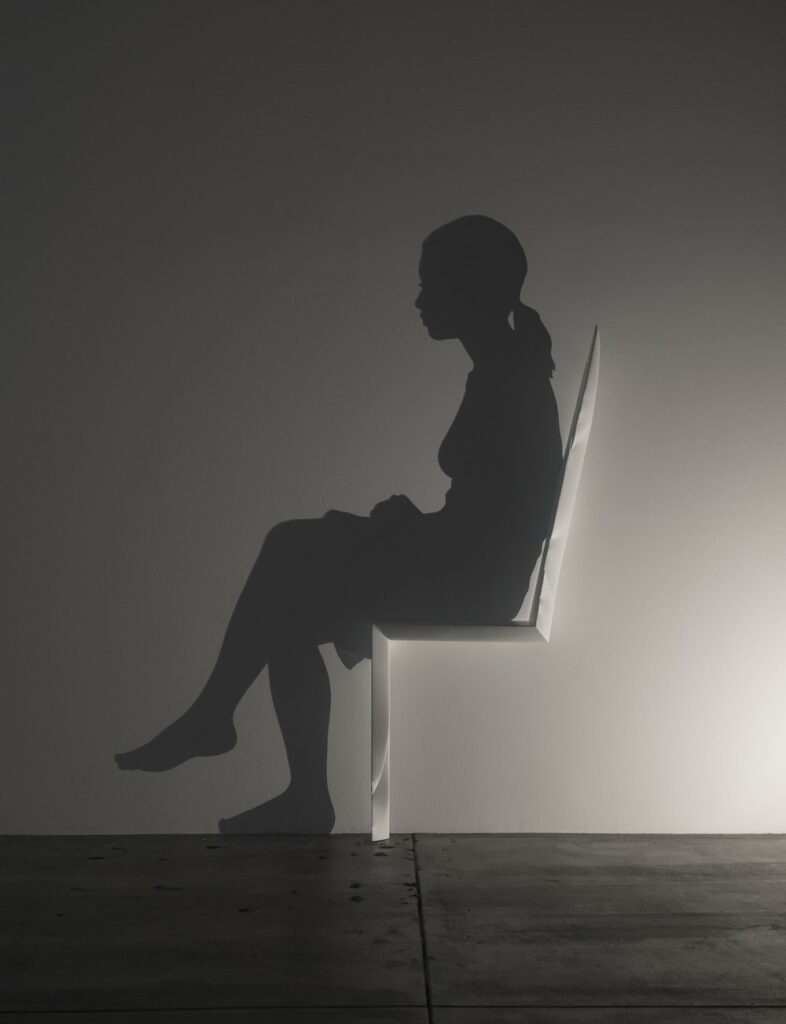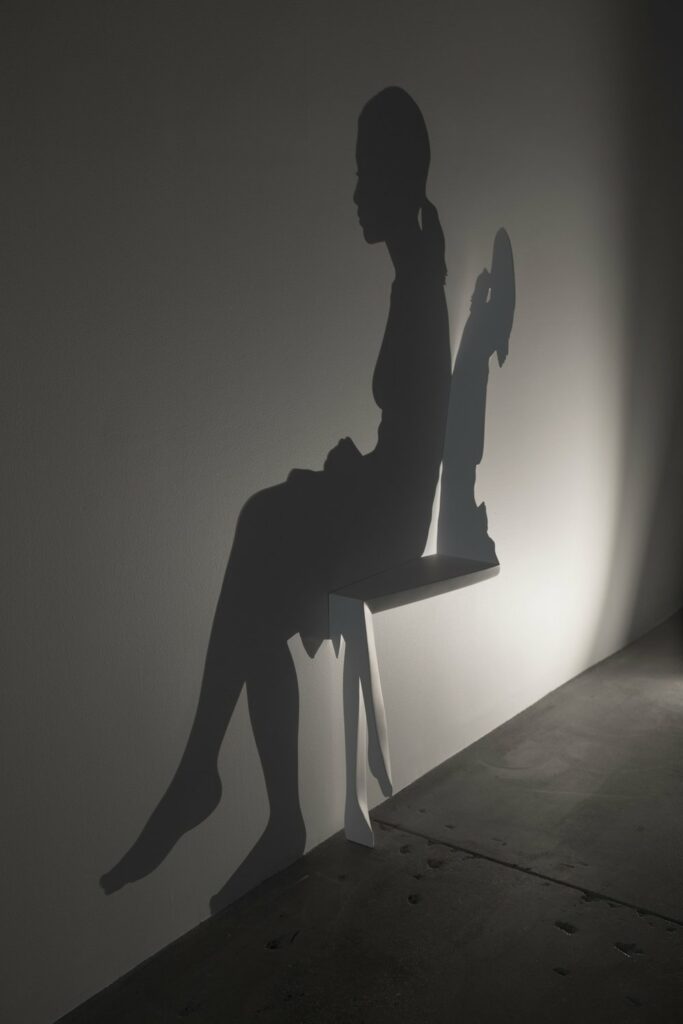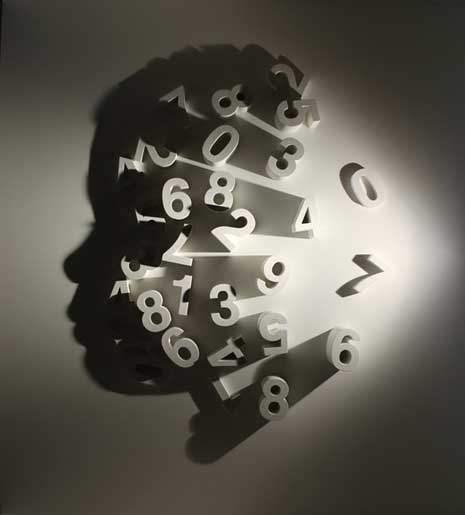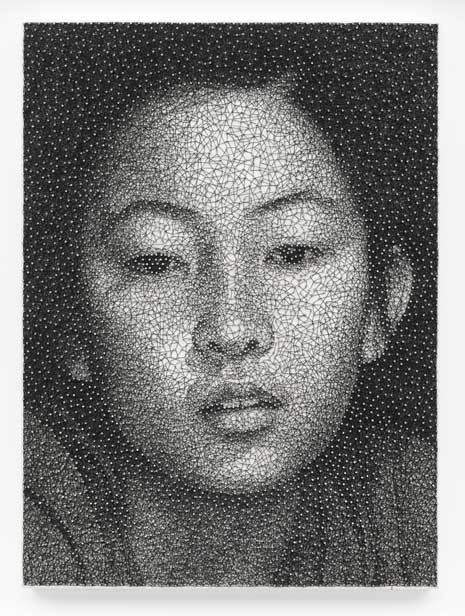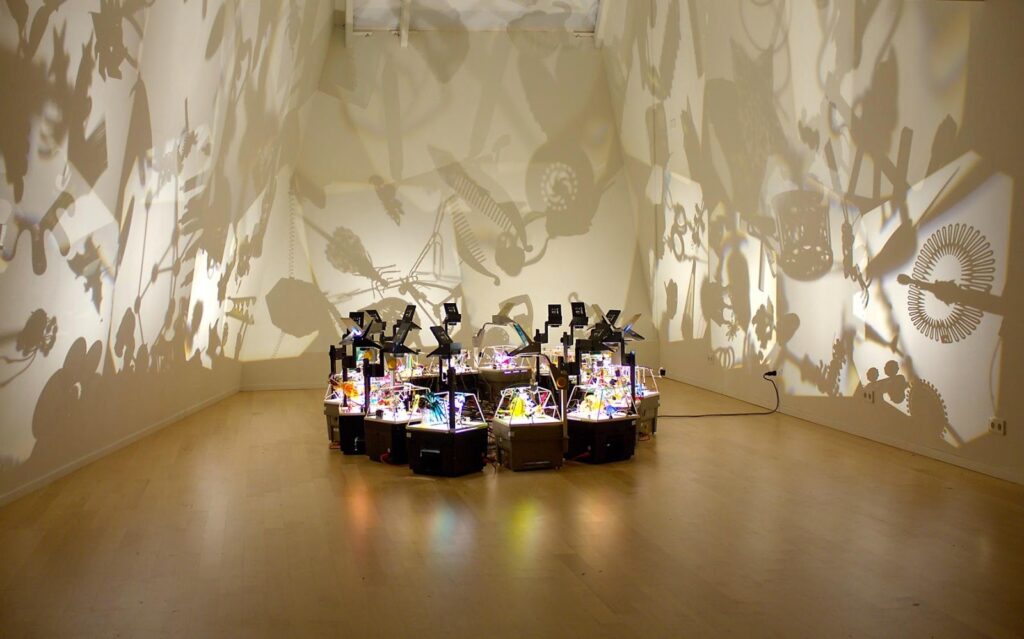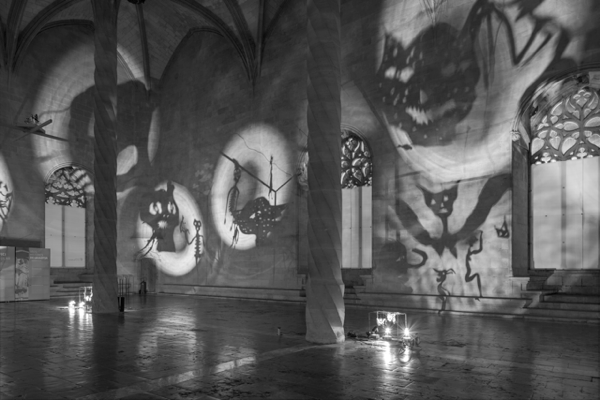Kumi Yamashita
Kumi Yamashita creates sculptures by combining light and shadow. She builds single or numerous items and arranges them near a single source of light. In this way, the entire artwork includes both the material (the solid objects) and the immaterial (the space between them) (the light or shadow). The painting she contributed is part of a series she has titled Constellation. Thousands of tiny nails, known as “brads,” are placed into a white-painted hardwood panel, and one continuous sewing thread is weaved between the brads to form the picture. She based this picture of my niece on a photograph that she discovered while sorting through a box of photos. Something about her youthful, open face made me want to look at her for an excessive amount of time. Her use of shadows to create a picture of a face, bringing to life an essential item that can be found about the home, was something that I was fascinated
Allegory of the Cave
Plato’s cave is an allegory used in his book Republic (514a–520a) to compare “the impact of education and lack thereof on human nature”. Plato’s brother Glaucon and his master Socrates have a conversation recounted by Socrates. Socrates portrays a group of individuals bound to a cave wall facing a blank wall in the metaphor. The people name shadows cast on the wall by items passing in front of a fire. The shadows are the inmates’ reality, but not reality. Forms theory is at a higher level than the natural sciences. Socrates compares the philosopher to a prisoner released from the cave and realises that the shadows on the wall are not reality. A philosopher seeks to comprehend deeper layers of reality. However, the other cave prisoners do not want to escape their captivity because they know no better. Artists create light and shadows using fire and puppets. Plutarch says the fire represents political philosophy taught in a nation-state. Light and shadows are used to convey prevailing beliefs of a time and place. Also, few people will ever escape. After decades of training, only a natural philosopher could exit the cave up the steep slope. Most people will be in the cave’s bottom, and just a handful will be the major artists who utilise human-made light to cast shadows.
Christian Boltanski’s
Christian Liberté Boltanski was a French sculptor, photographer, painter, and film director who worked in various media. He is most recognised for his photographic installations and his modern French conceptual aesthetic, which he has developed over the years. James suggested I have a look at Christian Boltanski’s shadow work. Little spirits, in his view, are how his shadows operate. He considers the possibility of a small element doing enormous work. Its shadows world is similar to a bit of a piece of the planet on its own. Christian Boltanski considers art to be similar to a musical score that anybody may perform. In his early work, he claimed to talk about his boyhood, despite his actual upbringing having long since vanished from his memory. He has lied about it so often that he no longer has an accurate recollection of his boyhood. His childhood has been reduced to the status of youth rather than a genuine one in his mind. Everything he did was an act of deception. Making tales is what he does for a living. He travels a lot, and he views the world through the eyes of a travelling circus clown.

